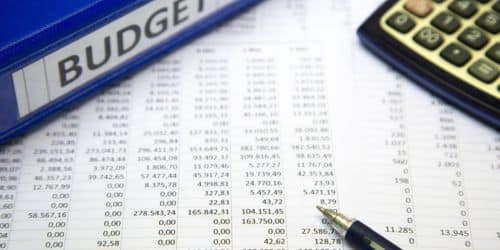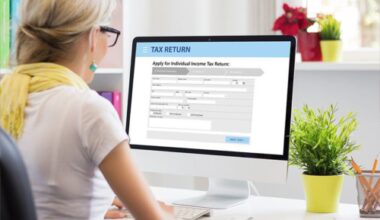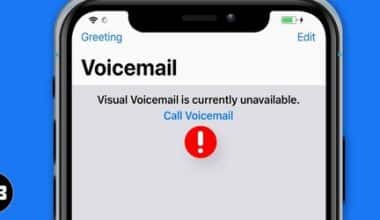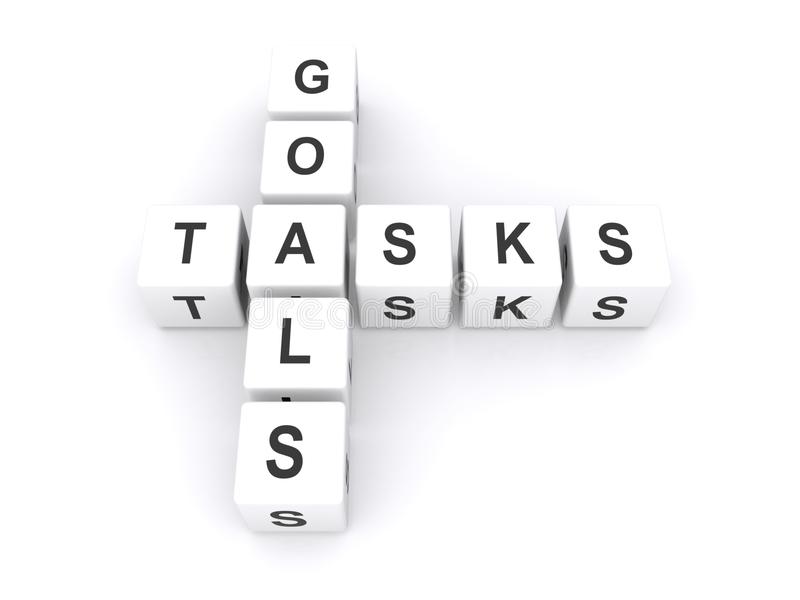The financial stability of a business can be determined by its cash budget. This budget allows you to monitor the amount of money coming in and leaving a business over some time. Understanding how cash budgets work can help you better control a company’s finances by allowing you to know where its money comes from and goes during each reporting period. In this article, we will define a cash budget, explain how they operate, describe how to set up a cash system and discuss the benefits that they offer. We will also provide an example of this budget type.
What is a Cash Budget?
An estimate of a company’s cash flows over a given period is called a cash budget. The budget could be for a weekly, monthly, quarterly, or annual period. This budget is used to determine if the entity has enough cash to continue operating within the time frame specified. The company’s cash budget provides insight into its cash needs (and any surplus) and aids in the determination of an efficient cash allocation.
How a Cash Budget Works
Companies use sales and production forecasts, as well as assumptions about necessary spending and accounts receivable collections, to create their cash budgets. If a business will have enough cash to continue operations, a cash budget is required. If a company lacks sufficient liquidity to operate, it must raise additional capital by issuing stock or incurring additional debt.
A cash roll forward calculates a month’s cash inflows and outflows and uses the ending balance as the beginning balance for the following month. This process enables the business to forecast cash needs throughout the year and modify the roll forward to adjust cash balances for all upcoming months.
Short-Term Cash Budget vs. Long-Term Cash Budget
Typically, cash budgets are viewed as either short- or long-term. While long-term cash budgets focus solely on cash requirements for the upcoming year to several years, short-term cash budgets focus on cash requirements for the upcoming week or months.
Utility bills, rent, payroll, supplier payments, other operating expenses, and investments are just a few examples of short-term cash budget items. Quarterly and yearly tax payments, capital expenditure projects, and long-term investments are the core elements of long-term cash budgets. Long-term cash budgets typically necessitate more strategic planning and detailed analysis because cash must be held for a longer period.
It’s also a good idea to budget for any emergencies or unexpected cash needs that may arise, especially if the business is new and not all aspects of operations are fully realized.
The Benefits of a Cash Budget System
Because it allows businesses to track every cent they earn and spend, a cash budget system can give a more accurate picture of a company’s financial health than other types of budgeting. Here are some additional benefits of this estimation:
#1. Is easy to understand
Accounting software can be complex and difficult to understand for non-experts. Cash budgets can help simplify financial processes if you don’t have an accounting background or are new to the industry because it directly lists how much money the company can expect to have at any given time. This clarity can help you make sound financial decisions.
#2. Prepares you for unexpected bills
When a company might need an emergency loan, a case budget can help. Having enough cash on hand can help a company retain valuable customers, ensure it can pay all of its employees on time, and ensure it can deliver its products on time. A cash budget system can also assist businesses in achieving the appropriate level of liquidity necessary to optimize their processes.
#3. Streamlines cash flow management
Cash budgets assist in managing a company’s cash flow by streamlining the process of tracking cash inflows and outflows over time. This can help you decide when to apply for additional funding. It can also assist you in identifying ways to reduce expenses until more revenue is generated through sales or other sources.
#4. Aids in deciding what to borrow
Cash budgets assist businesses in determining the amount of money they should borrow from banks and other lenders. A company can develop its financing strategy by projecting future profits based on current sales trends and expenses. This assists finance professionals in determining whether to borrow all at once or in installments. Depending on the company’s financial situation, either option can benefit the company’s needs.
#5. Forecasts of upcoming financial needs
When launching a new product line or opening a new branch office, cash budgets help businesses forecast their future cash needs. These budgets outline the amount required to fund these projects and assist them in making cash estimates. This can help companies secure adequate funding for major operational changes.
#6. Aids in avoiding overspending
Cash budgets enable you to see exactly where a company’s money goes each month, preventing it from overspending on unneeded items. Knowing how much money it has available each month can help its financial teams make better spending decisions. This can also help them avoid overspending on items that aren’t necessary for the operation of the business.
Read Also: INTERNAL CONTROLS ACCOUNTING: Meaning, Importance, Types, and Principles
Purpose of Cash Budget System
Let us understand the intent behind using a cash budget system in an organization’s daily operations through the discussion below.
- The primary goal of the cash budget is to see the business’s future cash position so that management can determine when funds need to be arranged in the future so that the business’s operations are not hampered.
- It is also prepared to determine whether there is excess cash available; if so, it must be invested productively to maximize the business’s returns.
- They are also prepared to forecast the cash surplus/deficit over the given period.
- To reduce the business’s expenditures by controlling the company’s spending.
How to Make a Cash Budget System
Before starting a cash budget system, it is important to understand that a cash budget is distinct from an overall financial budget in that it is solely concerned with cash receipts and outflows. This means that revenue assumptions for the period must be converted to cash receipts for the same period, and vice versa.
Accounting software can assist in identifying the sources and uses of cash from a bank account in some cases; however, poor record-keeping may have an impact on information availability.
To prevent this, it is important to handle cash reconciliations in addition to maintaining tight controls over accounting journal entries. It takes time to build cash budgets. Here are the steps to cash budgets.
#1. Determine a starting point balance
The starting balance that will be used to roll over the projected cash balance must be determined first. If the cash budget is for a single quarter, the beginning balance should be equal to the previous quarter’s ending balance. This applies to any period. Always link the initial cash balance to an external source, such as a bank statement.
#2. Determine the period
Weekly, monthly, quarterly, and yearly cash budgets can all be created. If the organization is cash-strapped, it can even be made daily. Be sure to select a timeframe that will assist in managing daily cash balances while providing sufficient future insight to detect any potential issues.
#3. Recognize all cash sources and uses
Identify each source and use of cash over the period and group them in an itemized list. Positive cash inflows outweigh negative cash outflows.
#4. Net sources and uses against beginning cash balance
To determine your net cash position, add all of the sources of cash to the beginning cash balance for the period and then reduce it by the number of expenses.
#5. Identify deficits and surpluses and make a plan
It will highlight cash surpluses and deficits once you have rolled over your beginning balance for the period. Examine the balances’ drivers. If there is a deficit, look for ways to cut costs or increase cash flow. If there is a surplus, identify potential uses for the money that is in line with the organization’s goals.
Example of a Cash Budget
Let’s look at a couple of examples to help us understand the cash budget system better.
Example 1
Elvis owns a supermarket in New Jersey. His payment schedule is quite hectic, as various suppliers deliver various products to satisfy Elvis’ store’s requirements. As a result, following advice from a supplier, he began implementing a cash budget statement.
In the following week, payments were made on time as a clearer picture was painted through the statement, and plans were made accordingly to ensure timely payments.
Example 2
Cash budgets are essential for business organizations, particularly small businesses because they provide owners and employees with a sense of the goals they are all working toward as a group.
Small businesses are particularly vulnerable to inflation and its effects. Budgeting enables them to deal with inflation and other business risks more effectively.
However, as the business grows beyond its infancy, the owners may find it difficult to maintain the cash budget because they want to focus on the business’s development. As a result, it is recommended that employees be trained to create, maintain, and review budgets.
What Expenses Should Be Included in a Cash Budget?
A cash budget should account for expected cash flows such as revenue as well as operational outflows such as returns, payroll, rent, utilities, supplies, and other business costs.
How Do you Prepare a Cash Budget?
The time frame for which the budget is being prepared will determine this. A few weeks worth of the cash will only account for day-to-day expenses related to funding and supplying a company’s operations, whereas a quarter’s or longer’s worth of cash budget may also account for larger expenses such as equipment, capital investment, and corporate taxes. Any remaining cash surplus at the end of one budget period is carried forward to the start of the next.
What is the main objective of a cash budget?
A cash budget is used by a company to determine whether it has enough cash to continue operating over the specified period. A cash budget will also give a company insight into its cash needs and any surpluses, allowing it to determine whether or not the company is effectively using cash.
What are the four elements of a cash budget?
Cash receipts, cash disbursements, net cash change for the period, and new financing needed are the four components.
What are the three methods for a cash budget?
There are three ways to prepare a cash budget: (a) the receipts and payments method; (b) the adjusted profit and loss method; and (c) the balance sheet method.
Who prepares the cash budget?
The cash budgets are under the direction of the chief financial officer, or the company’s top financial manager. The owner must assist with cash budget management and decision-making for businesses lacking this level of internal expertise.
Conclusion
Cash budgets assist businesses in planning for future cash availability by estimating the cash flows presented in a cash budget. To account for periods of high and low cash balances, financial plans are developed. Massive cash balances suggest that the company did not achieve the highest possible rate of return. The company will be unable to pay its bills due to insufficient cash reserves. Businesses should maintain an adequate cash balance to cover their projected cash needs as well as additional reserves to cover unforeseen contingencies.
Related Articles
- BUDGET FOR A BUSINESS: What It Is, Types, and How to Create It
- FINANCIAL GOALS 2023: The Complete Guide for Students and Businesses (+ quick tips)
- 7 Practical Budgeting Tips to Save Money
- BUDGET MANAGEMENT TOOLS: Definition, and Best Budget Management Tools
- MARKETING STRATEGIES FOR ECOMMERCE BUSINESS






